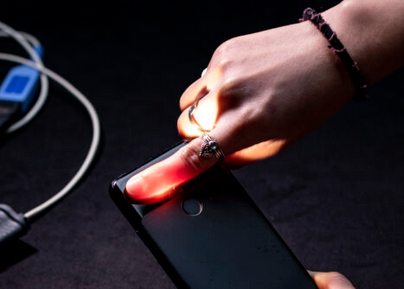Diabetes after dark, smartphone blood ox, whose heart attacks kill, and more
21 Sep 2022
Posted by Andrew Kantor
With heart attacks, blood sugar kills
Some heart attacks kill, some don’t. What’s most likely to affect which way it goes? Hyperglycemia.
Analyzing 12 year’s worth of heart-attack data, Brazilian researchers looked at hyperglycemia, obesity, cholesterol levels, high blood pressure, and smoking. One stood out: “Hyperglycemia correlated 5 to 10 times more than other factors.”
(Not surprisingly, smoking caused more deaths overall, but wasn’t as big a factor in heart-attack deaths.)
Region meetings are coming!
We know how you like to plan ahead, so mark your calendar for your GPhA Fall Region Meeting — starting in late October.
The locations haven’t been set yet, but most of them will probably be in the same restaurant as usual. (We’ll let you know, of course.)
The bad news: Thanks to new ACPE guidelines, we can’t offer CE credit any more. Then again, we know most of you came for the great meal, awesome attendees, and a chance to get a quick update on what GPhA is up to.
What’s your region? Click here to find out. Then make a note of your dinner date and get your conversation starters ready:
- Thursday, October 27:Region 5
- Tuesday, November 1: Regions 2 & 7
- Wednesday, November 2: Regions 8 & 9
- Thursday, November 3: Regions 10 & 12
- Tuesday, November 8: Regions 1 & 3
- Wednesday, November 9: Region 11
- Thursday, November 10: Regions 4 & 6
Shine a light through it
Assuming you have a smartphone, it’s probably got a camera and a flashlight*. And chances are the lens is next to the light. (Yes, I know some of you just checked.)
And thus a smartphone can become a pulse oximeter.

Researchers at the University of Washington and UC San Diego were able to measure blood oxygen saturation by shining that light and using the camera.
“The camera records how much that blood absorbs the light from the flash in each of the three color channels it measures: red, green and blue. Then we can feed those intensity measurements into our deep-learning model.”
“Deep learning model”: They used a standard oximeter to train a computer program to correlate the phone’s measurement with the actual value — 10,000 times. Now the app can measure it to FDA-required accuracy. In the lab, at least.
* Pro tip: Turn off that flash for better indoor pictures. Almost the only time to use it is *outdoors* to get rid of shadows.
This simple trick will get you to walk more!
Wear a pedometer. You don’t even have to look at it — just put it on.
BYU researchers found …
… that those wearing a pedometer walked an average of 318 more steps per day than those without a tracker, even if the walkers had no specific fitness goals or incentives, and even when they couldn’t see the step count the pedometer kept.
A gel to fight gum disease
If you have pet mice, you probably worry about their getting gum disease. Periodontitis doesn’t just end up making their teeth fall out, it’s also been linked to dementia and even heart disease.
But there may be a new treatment on the horizon: a gel, developed at NYU, that seems to block the worst effects of gum disease. The key is succinate — a molecule that’s just a normal byproduct of life … but higher levels are connected to periodontitis .
You can’t prevent succinate, so they instead developed a gel that blocks succinate receptors in the mice’s mouths. Bingo! It not stopped the periodontitis, it also got rid of a lot of the mouth’s bad bacteria while leaving the good bugs alone.
Next up is more testing, then human testing. “Their long-term goal is to develop a gel and oral strip that can be used at home by people with or at risk for gum disease.”
Saving you a click
“Biden said the pandemic is over. Is it?”
No.
It’s called “night” for a reason
Ben Franklin was right: Early to bed and early to rise, yada yada yada. At least about the healthy part, because apparently (per Rutgers researchers) night owls have a greater risk of both diabetes and heart disease.
Why? Not only do early risers use more fat for energy (and seem to exercise more), night owls need more insulin to lower their glucose levels, plus they tend to favor carbohydrates for energy — and that leads to obesity, inflammation, and other Bad Stuff.

Doomed
Someday: smart masks
Imagine being in a room, wearing a mask because it’s crowded, and suddenly your phone starts shouting, “Danger! Danger, Will Robinson!*” You look at your conversation partner with disdain and beat a hasty retreat.
It could happen thanks to a “smart” face mask with a built in sensor sensitive enough to detect flu viruses or SARS-CoV-2.
The sensor within the mask’s breath valve contains aptamers, short strands of DNA or RNA that can be designed to bind to specific proteins. […] If the aptamers bind to their target proteins, their electrical charge changes and an integrated chip in the mask sends a signal to a designated smartphone.
The idea is still in the early stages at China’s Tongji University, but science-fiction writers should take note: If it can detect pathogens in a conversation, what’s next? “Pheromones indicate romantic interest!” “Warning, cocaine addict!” “Congrats, she’s pregnant!”
* That would be the default. You would need to change it if your name wasn’t Will Robinson


